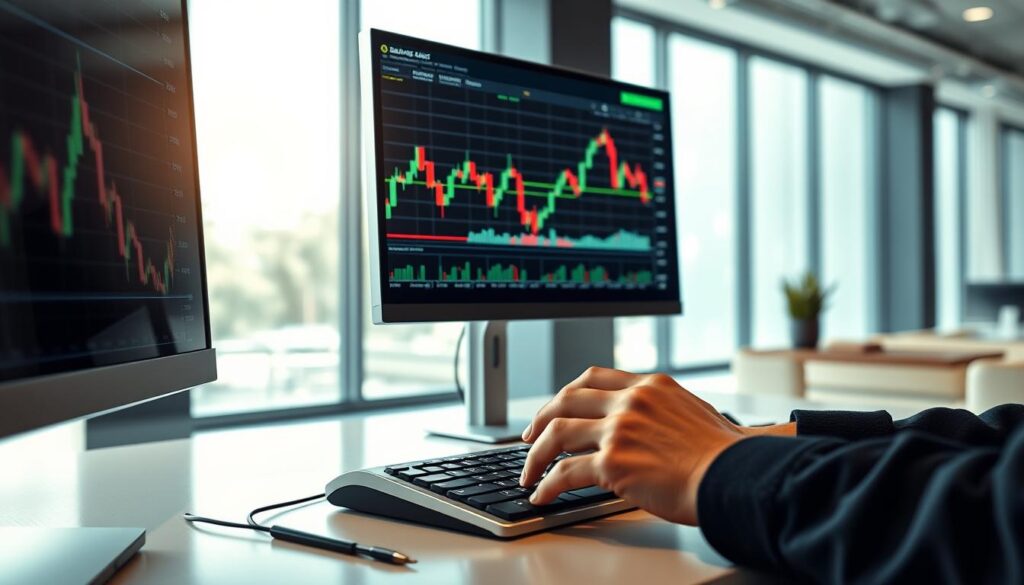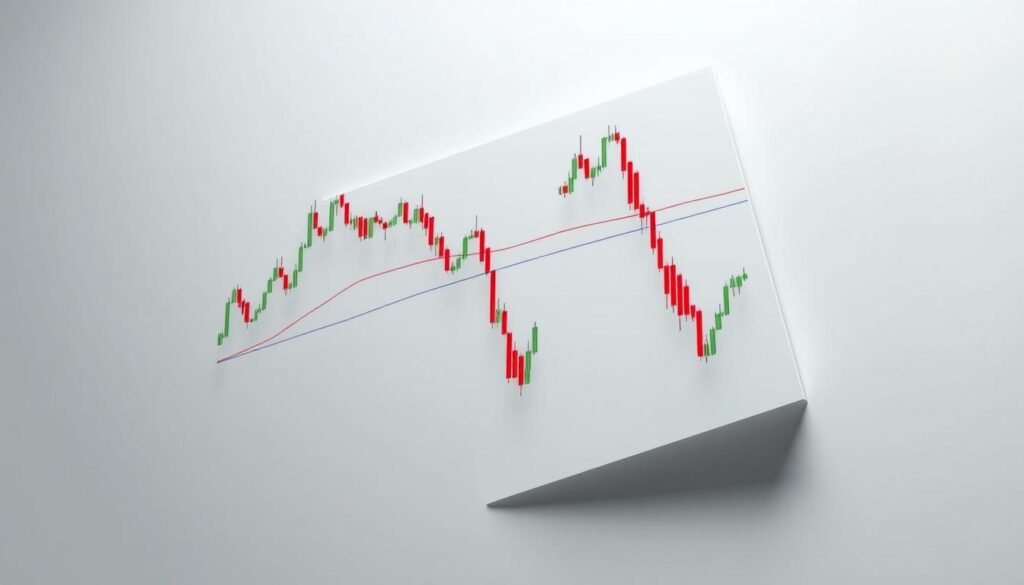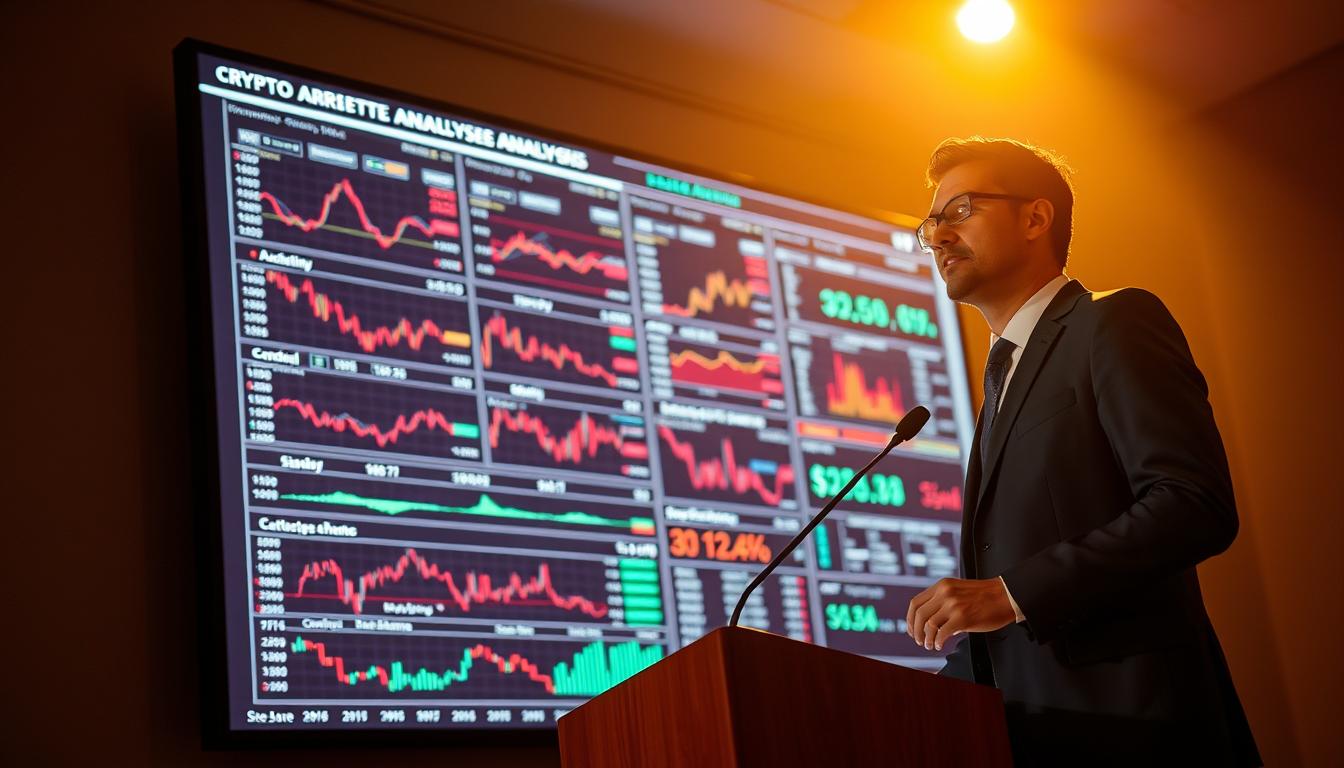Now Reading: Crypto Market Making Strategies Explained: A Beginner’s Guide
- 01
Crypto Market Making Strategies Explained: A Beginner’s Guide
Crypto Market Making Strategies Explained: A Beginner’s Guide

Welcome to the world of digital assets. Have you ever wondered how you can buy or sell a token instantly, even if it’s new? The answer often lies with a special group of participants. They are the backbone of a healthy trading environment.
These entities provide the essential grease that keeps the wheels turning. They ensure there are always orders available for traders. This process, known as market making, is crucial for any financial ecosystem. It supports liquidity, reduces price gaps, and helps create fair conditions for everyone.
This guide is designed for beginners. We will break down the core concepts in a simple way. You will learn how this activity differs from regular trading. We will also explore the role of professional firms and advanced algorithms. Understanding these crypto market making strategies explained is vital for anyone involved in trading or launching new projects.
By the end, you’ll grasp key ideas like bid-ask spreads and order book depth. Our goal is to make these complex topics accessible and practical for you.
Key Takeaways
- Market makers are essential for providing continuous buy and sell orders, ensuring traders can always execute transactions.
- They play a critical role in maintaining liquidity, which helps stabilize prices and reduce trading costs for everyone.
- This activity is fundamentally different from standard trading, focusing on providing a service rather than speculative profit.
- Professional firms use sophisticated algorithms to manage risk and provide efficient liquidity across various digital assets.
- A deep understanding of these concepts is beneficial for traders, investors, and project teams launching new tokens.
- Healthy liquidity provision is a key indicator of a mature and trustworthy digital asset ecosystem.
Understanding Market Making Fundamentals
The ability to buy or sell assets instantly relies on dedicated participants working behind the scenes. These entities create the foundation for efficient trading environments.
Definition and Core Concepts
A market maker is an entity that continuously quotes both buy and sell prices for financial assets. They stand ready to facilitate trades at any moment.
These participants profit from the spread between their buying and selling prices. This spread represents their compensation for providing essential liquidity to markets.
Market makers analyze supply and demand to discover fair value for assets. They consider order flow and current conditions to set accurate prices.
Traditional vs. Crypto Market Making
The core function remains consistent across different types of markets. However, execution methods vary significantly between traditional and digital asset environments.
Traditional markets operate during limited hours with centralized liquidity. Crypto markets trade 24/7 across hundreds of exchanges worldwide.
This fragmentation requires advanced technological solutions. Market makers must manage higher volatility while maintaining continuous price discovery.
The always-on nature of digital asset trading demands sophisticated automation. This ensures consistent liquidity provision across global platforms.
What is Crypto Market Making?
The foundation of efficient token trading lies in the constant availability of buy and sell options. Specialized entities work continuously to maintain this essential function across digital asset platforms.
These participants quote both purchase and sale prices simultaneously. They ensure traders can execute transactions whenever desired.
How Market Makers Operate
Consider a newly launched token called $NEW. Initially, few participants may be actively trading this digital asset.
A liquidity provider steps in by placing both bid and ask orders. They bridge the gap between potential buyers and sellers who cannot easily connect.
When Alice wants to sell her $NEW tokens, the market maker offers a fair purchase price. Simultaneously, they list those tokens for sale to interested buyers like Bob.
| Aspect | With Market Makers | Without Market Makers |
|---|---|---|
| Order Availability | Continuous buy/sell quotes | Intermittent, unpredictable |
| Price Spread | Tight, competitive | Wide, inefficient |
| Trade Execution | Instant, reliable | Slow, uncertain |
| Market Stability | High price consistency | Significant volatility |
Ensuring Liquidity in Digital Assets
These entities must operate across multiple trading venues simultaneously. Liquidity fragmentation requires sophisticated technological solutions.
Advanced algorithms monitor conditions across dozens of exchanges. They adjust quotes in real-time based on volume and price movements.
This automated approach maintains sufficient order book depth. It allows trades of various sizes without excessive price impact.
Crypto Market Making Strategies Explained
The profitability and effectiveness of liquidity provision depend on carefully calibrated operational approaches. Professional firms employ systematic methods to balance competitive pricing with financial protection.
Managing Bid-Ask Spreads
Bid-ask spread management forms the core of profitable operations. Providers earn revenue from the difference between purchase and sale quotes.
Tight spreads attract more participants by reducing transaction costs. However, wider spreads offer protection during volatile conditions.
| Market Condition | Typical Spread | Provider Strategy | Trading Volume Impact |
|---|---|---|---|
| Normal Trading | $50 | Competitive pricing | High activity |
| High Volatility | $150 | Risk protection | Reduced but stable |
| Low Volume | $75 | Balanced approach | Moderate growth |
Dynamic Pricing and Order Flow
Advanced algorithms continuously adjust quotes based on real-time data. These systems analyze order flow patterns and competitor actions.
When buy orders increase significantly, systems automatically raise ask prices. This dynamic approach ensures quotes remain aligned with current demand.
The strategy creates a win-win situation for all participants. Providers maintain profitability while traders enjoy efficient execution.
Key Benefits of Employing Market Makers
Professional liquidity providers deliver significant advantages that extend far beyond basic trading functionality. Their presence creates a healthier ecosystem for all participants.
Stability and Reduced Volatility
Market makers create consistent buy and sell pressure. This balanced approach minimizes wild price swings.
Assets become more predictable and less risky. Investors prefer stable conditions for their portfolios.
| Metric | With Market Makers | Without Market Makers |
|---|---|---|
| Price Stability | High consistency | Frequent fluctuations |
| Trading Volume | Organic growth | Inconsistent patterns |
| Investor Confidence | Strong trust | Limited participation |
| Market Depth | Deep order books | Thin liquidity |

Enhanced Organic Volume and Trust
Genuine trading activity distinguishes healthy markets from manipulated ones. Market makers attract real participants through efficient pricing.
Deep liquidity reduces transaction costs for traders. This encourages broader participation across different token types.
Increased organic volume signals legitimacy to the investment community. Projects gain valuable feedback about their token performance.
These benefits create a virtuous cycle of growth and confidence. The entire ecosystem becomes more robust and attractive.
Using Buy Sell Orders for Liquidity Provision
The constant flow of buy and sell quotes forms the bedrock of active digital asset exchanges. This activity ensures traders can execute transactions smoothly at any moment.
Providers place simultaneous bids and asks to bridge the gap between participants. They continuously update these prices to reflect real-time conditions.
Mechanics of Buy and Sell Orders
An order book displays all active bids and asks arranged by price level. Bids represent purchase intentions, while asks indicate sale offers.
For example, a provider might place a bid for 100 tokens at $50. Simultaneously, they list an ask for 100 tokens at $51.
This simple action creates immediate trading opportunities. The narrow spread between prices reduces costs for all participants.
Optimizing Order Book Depth
Depth refers to the volume of orders available at different price points. A deep order book can handle large transactions without major price shifts.
Providers layer their buy sell orders at strategic intervals. This creates a robust buffer against volatility.
They adjust order sizes based on expected volume and current activity. This dynamic management maintains consistent liquidity.
| Order Book Characteristic | Shallow Depth Impact | Deep Depth Impact | Provider Action |
|---|---|---|---|
| Price Stability | High sensitivity to large orders | Minimal price disruption | Layer orders at multiple levels |
| Trade Execution | Difficult for large volumes | Smooth for all sizes | Adjust sizes based on volume |
| Spread Width | Typically wider | Can be kept narrow | Continuous quote updates |
| Investor Confidence | Lower due to instability | Higher due to reliability | Maintain consistent presence |
This meticulous management of orders is a continuous process. It happens thousands of times daily to ensure a healthy trading environment for everyone.
Risk Management in Market Making
Professional liquidity providers implement comprehensive safety measures to safeguard their operations from unexpected market movements. These protective approaches ensure continuous service even during turbulent conditions.

Hedging and Volatility Forecasting
Hedging techniques create financial protection against adverse price movements. Providers use offsetting positions in related instruments to balance their exposure.
For example, holding 100 Bitcoin might be paired with selling 100 BTC futures contracts. If the spot price drops, gains in the futures position offset inventory losses.
Advanced statistical models analyze historical data to predict future volatility levels. This forecasting helps providers adjust their strategy before major movements occur.
Managing Exposure and Capital
Maintaining sufficient capital reserves is crucial for handling large trades and market shocks. Robust financial backing ensures obligations can be met during stressful periods.
Providers set strict inventory limits and implement stop-loss protocols. They continuously rebalance positions to maintain risk within acceptable parameters.
Diversification across multiple exchanges reduces concentration risk. Accessing different liquidity pools protects against sudden crunches on any single platform.
Understanding the Role of Market Makers
The efficiency of modern trading environments depends heavily on specialized intermediaries who bridge the gap between buyers and sellers. These entities perform multiple critical functions that extend far beyond basic order placement.
Facilitating Smooth Trading Operations
Market makers ensure continuous availability of trading opportunities by maintaining active bid and ask quotes. This constant presence allows traders to enter and exit positions without significant delays.
The role of market makers includes absorbing temporary imbalances between supply and demand. They prevent extreme price movements that would otherwise disrupt normal trading activity.
These participants maintain tight spreads and deep order books to minimize transaction costs. This benefits all market participants by reducing slippage during trade execution.
Market makers ensure fairness by providing consistent liquidity even during low-volume periods. Their presence supports price discovery and helps establish accurate asset valuation.
The role market makers play is particularly vital for new token launches. They help projects establish liquid markets and attract diverse participants including institutional traders.
When to Leverage a Crypto Market Maker
Strategic engagement with market makers occurs at specific inflection points in a project’s lifecycle. Knowing when to implement professional liquidity services can determine long-term success in digital asset markets.
Token Launch and New Market Entries
The token launch represents the most critical moment for establishing market presence. First impressions with investors depend heavily on initial trading conditions.
A professional market maker ensures sufficient liquidity across multiple exchanges from day one. This prevents the poor trading experiences that can doom new projects.
Low liquidity during launch leads to excessive volatility and wide spreads. These conditions discourage both retail and institutional investors from participating.

Beyond initial launches, market makers become valuable when listing on new platforms. They’re also essential when entering new geographic markets or during volume declines.
Attracting Institutional Participants
Institutional investors require deep liquidity to execute large trades efficiently. A reputable market maker signals project legitimacy and market maturity.
These participants view professional liquidity provision as a competitive advantage. It makes them more comfortable allocating significant capital to projects.
The presence of a market maker increases the market’s tolerance for large operations. This includes facilitating OTC trades that benefit substantial transactions.
Well-structured liquidity helps attract exchange listings and partnership opportunities. It creates a virtuous cycle of growth and confidence in crowded markets.
How to Choose a Crypto Market Maker
Effective evaluation of potential liquidity partners requires careful consideration of multiple performance factors. The right market maker selection impacts trading efficiency and asset stability across exchanges.
Evaluation Criteria and Performance Metrics
Begin by analyzing a provider’s ability to maintain tight spreads. Competitive pricing indicates larger average volumes and better market efficiency.
Examine their approach to market depth enhancement. A skilled market maker strategically manages buy and sell orders within narrow variance ranges.
Verify uptime guarantees exceeding 95%. This ensures trading algorithms consistently adapt to changing conditions across different markets.
Assess capital strength and risk management capabilities. Well-capitalized providers can handle large trades during stress periods.
Regulatory Compliance and Business Ethics
Ensure the market maker complies with all relevant regulatory requirements. This includes AML and KYC protocols in their operating jurisdictions.
Investigate their adherence to ethical business practices. Avoid providers engaged in wash trading or other manipulative activities.
Evaluate service quality through transparency in reporting and fair pricing structures. Responsive support demonstrates commitment to partnership success.
Research reputation through industry references and regulatory history. A clean track record builds confidence among all participants.
Finally, compare cost structures across multiple providers. Understand all fees to ensure competitive rates without hidden charges.
Advanced Market Making: Algorithmic Trading & Statistical Arbitrage
The evolution of digital trading has given rise to highly automated market making approaches. Professional firms now rely on sophisticated algorithms to maintain competitive edges.
Inventory Management and Automated Strategies
Advanced systems continuously monitor position levels across multiple assets. These automated tools trigger responses when holdings exceed predetermined risk thresholds.
Market makers incorporate strict rules into their algorithms. Maximum inventory levels and stop-loss limits protect against excessive exposure.
Statistical arbitrage identifies pricing inefficiencies between correlated digital assets. For example, algorithms detect when Bitcoin trades at unusual ratios compared to Ethereum.
Adjusting Quotes in Real Time
Algorithms analyze real-time data including order book depth and trade volume. They make split-second decisions to update bid and ask prices.
Dynamic systems maintain optimal spreads during changing conditions. This automated approach ensures competitive positioning across exchanges.
The technology handles thousands of trades daily without human intervention. Low-latency connections and high-performance computing support these operations.
| Algorithmic Component | Primary Function | Risk Management Feature | Execution Speed |
|---|---|---|---|
| Quote Engine | Dynamic price updates | Spread control | Milliseconds |
| Arbitrage System | Pricing discrepancy detection | Correlation monitoring | Seconds |
| Inventory Manager | Position balancing | Exposure limits | Continuous |
| Risk Controller | Volatility adaptation | Stop-loss triggers | Instant |
Working with Exchanges & OTC Trading Solutions
Strategic alliances between trading platforms and liquidity specialists create powerful synergies that benefit the entire digital asset ecosystem. These partnerships ensure smooth operations across multiple venues while serving diverse participant needs.
Partnerships for Broad Listings
Exchanges frequently collaborate with professional market makers to maintain consistent liquidity. This arrangement reduces arbitrage opportunities and enhances platform attractiveness.
In return for continuous service, providers receive fee rebates and other incentives. This mutually beneficial relationship boosts trading volume and improves market efficiency.
Token issuers gain significant advantages from these partnerships. Demonstrating committed liquidity support helps secure listings on competitive exchanges. A comprehensive guide to market making explains how these relationships develop.
The Role of OTC Services in Large Trades
Over-the-counter services address unique needs for institutional investors. Large trades executed through public order books often cause significant price slippage.
Market makers facilitate OTC transactions by directly matching substantial orders. This approach protects both buyers and sellers from market impact.
Institutional participants benefit from better pricing and reduced transaction costs. OTC services provide price discovery and settlement support for block trades that would disrupt normal trading activity.
Leveraging Market Making for Token Adoption Success
A token’s journey from launch to widespread acceptance hinges on a crucial element often overlooked by new projects. Professional liquidity provision creates the foundation for sustainable growth.
It directly influences how investors perceive and interact with a digital asset. This support transforms volatile launches into stable, trustworthy ecosystems.

Enhancing Trust and Market Performance
Deep liquidity builds immediate confidence among participants. Investors prefer assets with tight spreads and consistent order books.
This environment minimizes significant price swings during normal trading. It creates a positive feedback loop attracting more volume.
Projects receive valuable data on how their tokenomics perform in real conditions. This feedback helps refine supply schedules and marketing efforts.
| Adoption Metric | With Professional Support | Without Professional Support |
|---|---|---|
| Price Stability | Low volatility, predictable moves | High volatility, erratic price swings |
| Investor Confidence | Strong trust from day one | Limited participation due to risk |
| Exchange Listings | Easier access to top platforms | Difficulty securing prime listings |
| Institutional Interest | Attracts large-scale investors | Primarily retail participation |
The right liquidity strategy separates successful tokens from forgotten ones. It turns speculative interest into long-term commitment.
This approach ensures fair value discovery based on genuine supply and demand. The entire ecosystem benefits from healthier trading conditions.
Conclusion
The difference between successful and struggling digital projects often comes down to one critical factor: reliable market infrastructure. Professional market making serves as the backbone of healthy digital economies, ensuring continuous liquidity and fair price discovery.
This support is not optional but essential for any serious project. It provides tighter spreads, reduced volatility, and deeper order books that benefit all participants. Understanding these mechanisms empowers token issuers and investors to navigate the crypto market more effectively.
As digital assets continue to mature, professional market makers will play an increasingly vital role. Choosing the right partner based on capital strength and regulatory compliance becomes crucial for long-term success.
The knowledge gained from this guide should inform your decisions when evaluating liquidity providers or launching new tokens. This professional support will continue facilitating the growth of global tokenized economies.
FAQ
What is the primary role of a market maker in digital asset trading?
The main function is to provide liquidity by continuously placing buy and sell orders. This activity narrows the bid-ask spread and creates a smoother trading environment for all participants, reducing significant price swings.
How do market makers manage risk during periods of high volatility?
They employ sophisticated risk management techniques, including hedging and volatility forecasting. This helps them manage their exposure and capital, ensuring they can continue providing liquidity even when prices move rapidly.
Why is the bid-ask spread an important metric for traders?
A tight bid-ask spread indicates a healthy, liquid market. It directly lowers trading costs for investors and reflects the efficiency of the market maker’s strategy in balancing supply and demand.
When should a new token project consider leveraging a market maker?
It is crucial during a token launch or when entering new exchanges. A market maker helps establish initial liquidity, build trust, and attract institutional participants by ensuring stable prices and order book depth.
What is the difference between algorithmic trading and manual market making?
Algorithmic trading uses automated strategies to adjust quotes in real time based on market data. This allows for faster reaction to order flow and more efficient inventory management compared to manual processes.
How do large trades, or block trades, get executed without impacting the price?
Market makers often facilitate these through Over-The-Counter (OTC) services. By matching large buy and sell orders away from the public order book, they prevent significant price disruption on exchanges.















